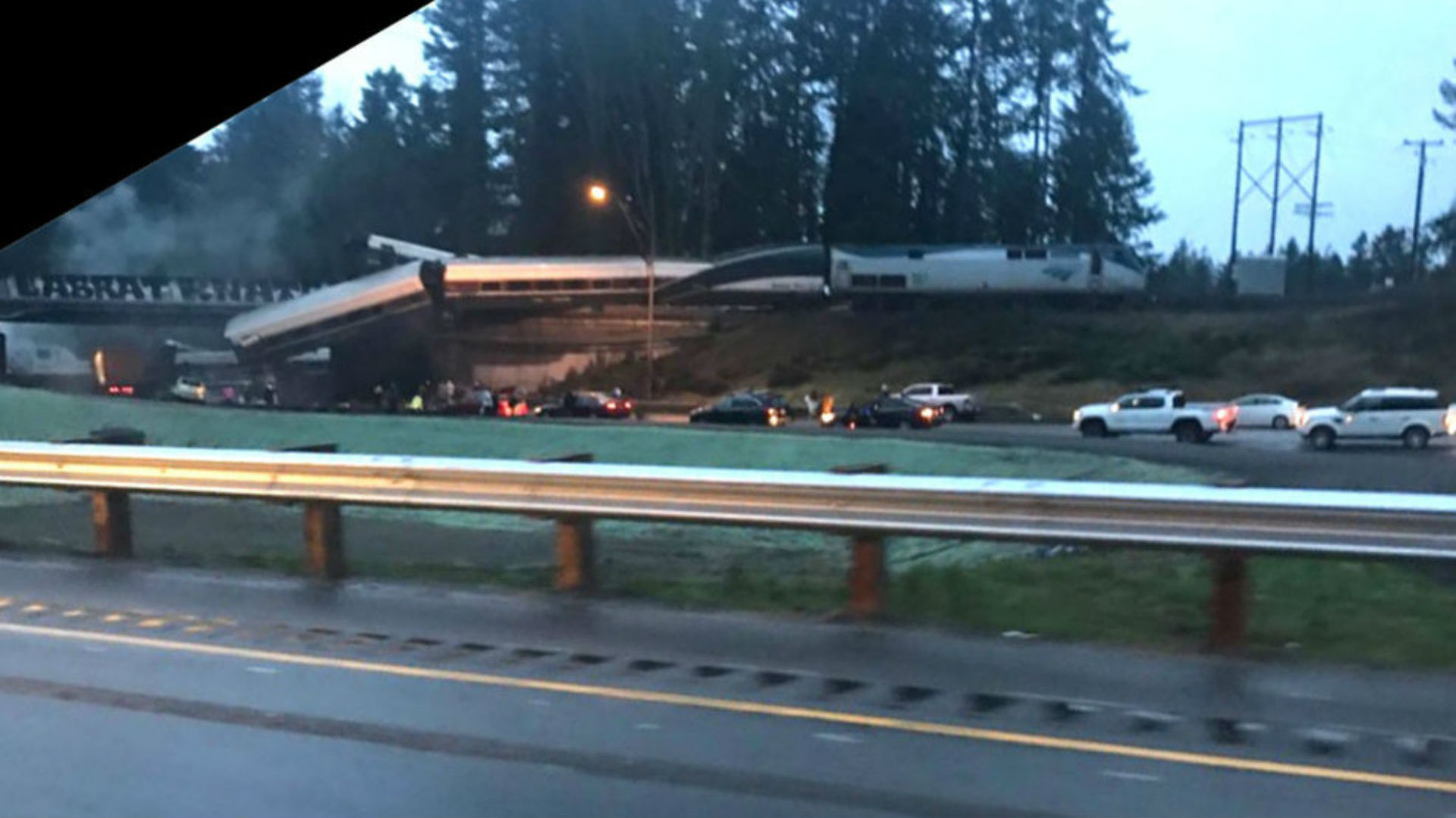

The engineer on the Amtrak train that flew off the track near Tacoma, Washington, last month, told federal safety investigators that he did not see signposts and signals that would have alerted him to reduce speed.
Three people died and dozens more were injured, including the engineer, in the Dec. 18, 2017, derailment on a newly opened stretch of track.
The National Transportation Safety Board, or NTSB, this week released details of its interview with the 55-year-old engineer. Both the engineer and qualifying conductor were seriously hurt in the crash, which caused a delay in speaking to them, the NTSB said.
The passenger train carrying 83 passengers and crew was traveling nearly 80 miles an hour when it went off the tracks on a curve where the speed limit was 30 miles an hour, landing on an interstate below.
The engineer and qualifying conductor were both in the lead locomotive when the accident occurred during the train’s inaugural run on the Point Defiance Bypass.
The engineer completed seven to 10 “observational trips” in a locomotive on the new stretch of track in the five weeks prior to the derailment, the NTSB said. He also completed three trips in which he was operating the locomotive.
Two of those trips were driving northbound, the NTSB said. He had finished just one training trip heading south—the direction it was going when it derailed. And, when he saw a signal at the curve, he mistakenly thought it was another signal.
Signs mark the decreased speed limit two miles before the curve and right at the curve.
The engineer was hired by Amtrak as a conductor in 2004 and promoted to engineer in 2013.
“Amtrak continues to cooperate with the NTSB on the investigation,” a spokesperson for the railway told The Drive in an email. “As there is an ongoing investigation, we can’t comment further.”
The NTSB said it expects the probe to last 12 to 24 months.